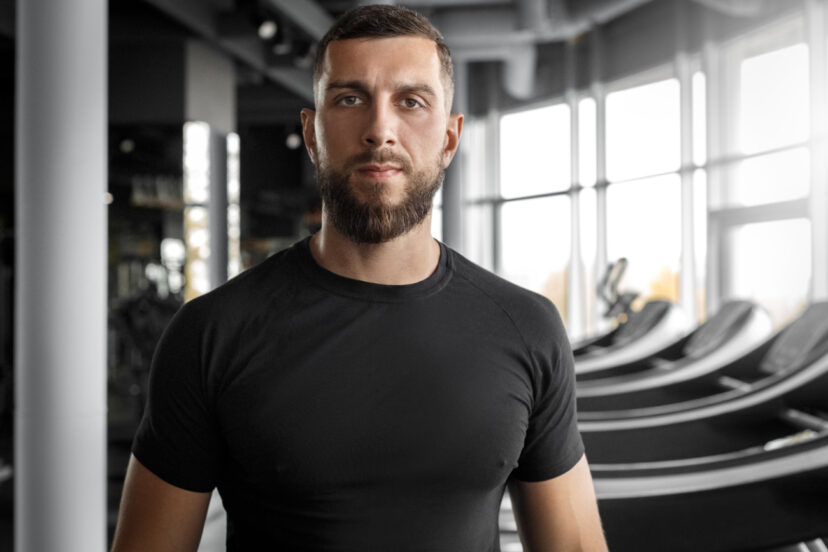Rowers Body: What are the Benefits of using a Rowing Machine
Rowing is a fantastic full-body workout that engages multiple muscle groups while providing a low-impact and joint-friendly exercise option. As an avid rowing enthusiast, I want to share with you the incredible benefits rowing can bring to your body and the changes you can expect when incorporating rowing into your fitness routine.
In this article, I will discuss the various ways rowing positively impacts your body, provide suggestions for effective rowing, and shed light on the transformations you can anticipate. Rowers body, what can you expect.
Benefits of Rowing for Your Body (rowers body)
2.1 Improved Cardiovascular Health.
Regular rowing sessions can significantly improve your cardiovascular health. Rowing is a fantastic aerobic exercise that gets your heart pumping and increases oxygen circulation throughout your body. By consistently engaging in rowing workouts, you can strengthen your heart, lower your resting heart rate, and enhance your overall endurance.
2.2 Increased Muscle Strength and Endurance
Rowing is a full-body workout that engages several major muscle groups simultaneously. The pushing and pulling motion of rowing works your legs, core, back, and arms, helping to build both strength and endurance. Over time, you’ll notice increased muscle definition and the ability to row for longer durations without feeling fatigued.
2.3 Weight Loss and Toning for your rowers body
If you’re looking to shed excess pounds and tone your body, rowing can be a highly effective tool. Rowing is a calorie-burning exercise that can help you achieve your weight loss goals. It engages large muscle groups, which accelerates calorie expenditure. Additionally, rowing contributes to overall body toning by targeting your arms, shoulders, back, and core muscles.
2.4 Low Impact and Joint-Friendly
One of the significant advantages of rowing is its low impact nature. Unlike high-impact activities like running or jumping, rowing puts minimal stress on your joints, making it an ideal exercise for individuals with joint issues or those seeking a low-impact alternative. Rowing allows you to engage in intense workouts without straining your joints, reducing the risk of injuries.
2.5 Improved Posture and Core Stability.
Rowing is an excellent way to improve your posture and strengthen your core muscles. The pulling motion involved in rowing helps develop the muscles responsible for maintaining an upright posture, which can alleviate back pain and enhance your overall alignment. As you row, you’ll also engage your core muscles, leading to improved stability and balance.
Changes You Can Expect from Rowing
3.1 Improved Stamina and Energy Levels for your rowers body
Incorporating rowing into your fitness routine will result in improved stamina and increased energy levels. Regular rowing workouts challenge your cardiovascular system, pushing it to adapt and become more efficient over time. As a result, you’ll notice that you can engage in physical activities with greater endurance and experience a boost in overall energy throughout the day.
3.2 Enhanced Muscle Definition for your rowers body
Rowing is a full-body exercise that targets multiple muscle groups simultaneously. By consistently rowing, you’ll experience enhanced muscle definition and toning. Your legs, glutes, back, arms, and core will become stronger and more sculpted, giving your body a lean and athletic appearance.
3.3 Decreased Body Fat for your rowers body
Fat Rowing is a highly effective calorie-burning activity. As you engage in regular rowing sessions, you’ll create a calorie deficit, which can lead to a decrease in body fat. Combined with a balanced diet, rowing can contribute to healthy and sustainable weight loss, helping you achieve a leaner physique.
3.4 Boosted Mental Health
Engaging in rowing workouts can have a positive impact on your mental well-being. Physical activity, including rowing, stimulates the release of endorphins, which are natural mood-enhancing chemicals in the brain. Rowing can help reduce stress, alleviate symptoms of anxiety and depression, and improve overall mental clarity and focus.
Suggestions for Effective Rowing
4.1 Setting Goals and Tracking Progress
To make the most of your rowing workouts, it’s essential to set specific goals and track your progress to reap the benefits and enhance your rowers body. Whether it’s increasing your rowing time, setting distance targets, or aiming for specific fitness milestones, having goals helps keep you motivated and provides a sense of accomplishment as you achieve them.
4.2 Correct Rowing Technique
Proper rowing technique is crucial for maximizing the benefits of this exercise and minimizing the risk of injury. Focus on maintaining good posture, engaging your core, and executing the full range of motion during each stroke. If you’re new to rowing, consider seeking guidance from a qualified instructor to ensure you learn the correct form.
4.3 Incorporating Interval
Training Interval training involves alternating between periods of high-intensity rowing and recovery periods of lower intensity. This method can help boost your cardiovascular fitness, increase calorie burn, and improve your overall rowing performance. Experiment with different interval training protocols to find what works best for you.
4.4 Mixing Up Your Rowing Routine
To prevent boredom and continue challenging your body, it’s important to vary your rowing routine. Try different rowing workouts, such as steady-state rowing, interval training, or pyramid workouts. Additionally, consider incorporating other forms of exercise, like strength training or yoga, to complement your rowing sessions and provide a well-rounded fitness regimen.
In Summary
Rowing is a fantastic exercise that offers numerous benefits for your body and overall well-being. By incorporating rowing into your fitness routine, you can expect improved cardiovascular health, increased muscle strength and endurance, weight loss, and toning. Rowing also provides low impact and joint-friendly exercise options while improving posture and core stability. Additionally, rowing contributes to enhanced stamina, energy levels, mental health, and decreased body fat. To make the most of your rowing workouts, set goals, focus on correct technique, incorporate interval training, and keep your routine varied and enjoyable.
FAQ
How often should I row to see results?
The frequency of your rowing sessions depends on your fitness goals and overall schedule. Aim for at least three to four sessions per week to experience noticeable improvements in your body and fitness levels. Consistency is key!
Can rowing help with back pain?
Yes, rowing can help alleviate back pain by strengthening the muscles that support the spine. However, it’s important to maintain proper form and technique during rowing to avoid strain. If you have pre-existing back issues, consult with a healthcare professional before starting a rowing program.
Can rowing replace other forms of cardio exercise?
Rowing is an excellent form of cardio exercise, but it can be beneficial to incorporate other activities into your routine for variety and overall fitness. Mixing rowing with activities like running, cycling, or swimming can provide a well-rounded cardiovascular workout.
How long should a rowing session be? T
The duration of your rowing session depends on your fitness level and goals. Beginners can start with 15-20 minutes and gradually increase the time as their stamina improves. Aim for 30 minutes to an hour of rowing to achieve optimal benefits.
Can rowing help with stress relief?
Yes, rowing, like any form of exercise, can help reduce stress levels. Physical activity stimulates the release of endorphins, which are natural mood boosters. Rowing provides an opportunity to focus on the rhythmic motion and can serve as a form of meditation, promoting relaxation and mental well-being.
Is rowing suitable for older adults?
Yes, rowing can be a suitable exercise option for older adults. It is a low-impact exercise that puts minimal stress on the joints while providing a full-body workout. However, it’s essential to consult with a healthcare professional before starting any new exercise program, especially if you have underlying health conditions.
Can rowing help improve posture?
Yes, rowing can contribute to improved posture by strengthening the muscles responsible for maintaining an upright position. The pulling motion of rowing engages the back muscles, helping to alleviate back pain and promote better alignment.
How can I prevent boredom while rowing?
To prevent boredom, mix up your rowing routine by incorporating different workout formats like interval training, pyramid workouts, or distance challenges. You can also listen to music, podcasts, or audiobooks to keep yourself entertained during longer rowing sessions.
Incorporating rowing into your fitness routine can have remarkable effects on your body. From improved cardiovascular health to increased muscle strength, weight loss, and enhanced mental well-being, rowing offers a wide range of benefits. Remember to set goals, maintain proper technique, and keep your workouts varied and enjoyable. Get ready to row your way to a healthier, fitter, and happier you!




